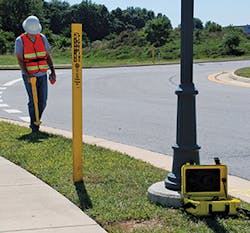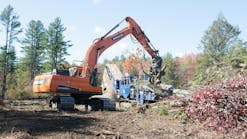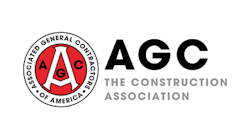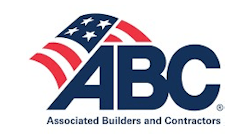Hitting gas or electric lines scares us more than anything, because they can bring the noises and flashes of death or serious injury. With electricity, preventing electric shock by avoiding underground electric lines is especially important because death can be instantaneous.
“Striking an electric line presents hazards to the drill operator, the tracker, and the surrounding people,” observes Harmon, in reference to horizontal directional drilling. “Because it is not always evident that an electric line has been hit by an HDD, drills should have an electric strike indicator [ESID] which detects when a strike has occurred. Some ESID systems can potentially detect proximity to an electric line under certain conditions, but this is not the intended use of the ESID and must not be used or relied upon for this purpose.”
If there is a strike, an alarm is sounded; if you hear it you can assume that a strike has already happened. Some drill manufacturers provide a bonded operator station to help protect the operator, but electrically insulated boots and gloves are still required as a precaution for preventing electric shock when the operator is working on electrical job sites (and that means within 10 feet of a buried electrical line).
Other workers in the crew should realize that they are in danger as well as the operator. Touching the machine, for example, could be deadly when there is an electric strike, so prevent electric shock is important. “When the drilling is in progress,” advises Harmon, “no one should be near the machine or anything connected to it, such as mud systems, while drilling is in progress. No one should be adding pipe, leaning on the machine etc., while it is drilling. If a strike occurs, the machine and anything connected to it will be electrified and a person standing one the ground and touching the machine will provide a path for electricity to flow to the ground, resulting in a shock. The ground around the machine will be electrified, so that walking will provide a voltage difference between the feet, which will also allow electricity to flow, resulting in a shock.”
With an electric strike, then, those near the machine should not try to walk away.
Key to a successful underground project, in the planning stage when you are finding out what obstacles are in the way of your equipment for the new work (whether it is horizontal directional drilling or excavation of any size), is using the right equipment. There is not just one way of detecting the underground utilities, and most manufacturers of locating instruments will tell you which products are suitable or inappropriate for your particular work. You may need more than one type. If you are using a directional drill, for example, the machine should be big enough to complete the pilot hole and pullback, but not too big for the available space! Tools for the downhole work and fluid additives must fit the soil conditions, and all the necessary support and safety equipment (which could include accessories) should be where it’s wanted.
On any locating task there are equipment qualities you should demand. The detecting device should be accurate! Yes, technologically wonderful instruments can disagree, depending on what they are asked to detect. The conditions for the soil underground can cause variations in the efficiency of instruments. To compare two locating instruments, a good way to determine the more accurate is to test them at a place where you already know the position of underground cable or pipe. See which device is more accurate.
If your own crews are going to use the utility locators, try to get models that are simple to operate. “Sophisticated does not need to be complicated,” comments Guillermo Warley, head of product development at Schonstedt Instruments, a company that has been successful in this business for more than 50 years. “Locators haven’t changed much in recent years, but having too many buttons and menus unnecessarily complicates some locators. New users should be able to learn the basics of operating the equipment quickly. Simplicity applies to more than just the user interface; battery replacement, storage, carrying etc. should all be easy to do.”
In other words, we could say that using a utility locator should not be a burdensome, complicated business, because it does not need to be. “The locator should be sturdy, but durability is not always a given in locators,” adds Warley. “We at Schonstedt have learned a lot of lessons from the magnetic locator side of our business. Both land surveyors and the guys that look for unexploded ordnance work (such as mines, and Schonstedt has found many of them over the years) work under rough conditions and push theequipment to the limits. Look for a strong material and solid construction. A good indication of the sturdiness of the locator may be inferred from how many years of warranty the manufacturer offers.”









